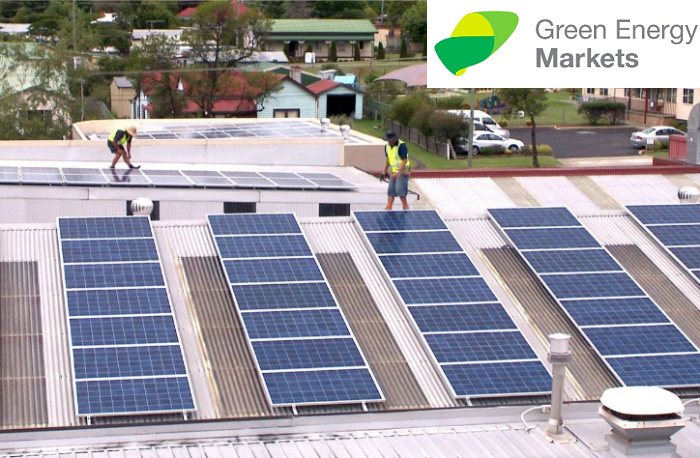
Rooftop solar PV installs this year are 56% above the same period last year says Green Energy Markets’ latest Renewable Energy Index.
108 MW of installations occurred in April and so far this year installs have exceeded 100 megawatts during each month; averaging 113MW January – April1.
The report states 15,896 small-scale solar systems were installed last month, with NSW and ACT leading the rest of the country (4,962 combined), followed by Queensland with 3,513 installs.
Enough solar panels were installed on rooftops throughout Australia in April to power 31,563 homes and Green Energy Markets estimates these systems will deliver $191 million in bill savings over the next ten years.
The rooftop PV industry is also continuing to put food on the table for thousands of Australian families. Employment in design, installation and sales so far this year has averaged just under 5,500 full-time jobs.
“By comparison the last census recorded 10,268 people employed across the entirety of other power stations in the country,” states the Index.
Continuing Sunny Days For Solar Or Clouds Gathering?
While stating 1,400 to 1,500 megawatts of rooftop PV by the end of 2018 is “reasonably likely”2, Green Energy Markets’ Tristan Edis is questioning how long the boom will go on for.
“The solar industry has clearly demonstrated an ability to scale-up solar capacity in line with some of the most ambitious emission reduction scenarios our politicians have been prepared to contemplate,” Mr. Edis stated in a RenewEconomy article yesterday. “But just because we can, doesn’t mean we will.”
He explains that in addition to reductions in the cost of solar, the high level of uptake has been partly driven by fears of ongoing increasing electricity prices; stoked by fossil fuel proponents who attempted to point the finger at renewables as the culprit.
These efforts backfired and essentially provided the PV sector with free advertising, encouraging more Australians to install solar panels. Ex-PM Tony Abbott triggered a similar effect a few years back when he had his speedos in a particularly tight knot over renewables and threatened to axe Australia’s major solar subsidy.
However, much of the fear of further electricity price hikes may have dissipated (except perhaps in WA, where electricity prices will rise in July – again). While that doesn’t make solar power any less attractive per se as Australians will continue to battle high energy bills, the sense of urgency may not be what it was. Another looming issue could be reductions in feed in tariffs as wholesale electricity costs decrease.
The Bigger Renewables Picture
Looking at large-scale renewables generally, the Index notes 5,430 megawatts of projects currently under construction across Australia at the end of April, providing enough work to employ 19,288 people.
Last month, renewables made up 19.8% of the electricity generated in Australia’s main grids, with enough energy generated to power 8.4 million homes.
Green Energy Markets’ April Renewable Energy Index, along methodology, can be downloaded here (PDF).
Footnotes
- Rooftop solar power system installations in March represented the highest monthly capacity total ever – 127 megawatts ↩
- Last year’s total was 1,072 megawatts ↩

 RSS - Posts
RSS - Posts



Too confusing. Still need to see benefits in dollares. So fa,spent too much money. Cheers
Um, okay….
“Last month, renewables made up 19.8% of the electricity generated in Australia’s main grids, with enough energy generated to power 8.4 million homes.”
So does that mean with all the electricity generation in Australia, there is enough energy to power (5*8.4million homes) 42million homes (for 25million people…)
Nice example of cherry picking – what about industry? How much was generated to sustain heavy industry/manufacturing or doesn’t that count and the ‘household’ needs are more pertinent?